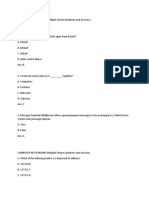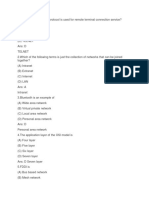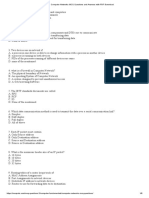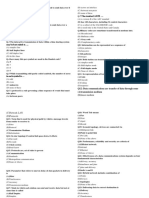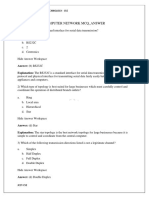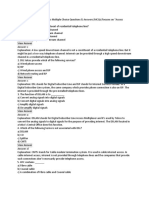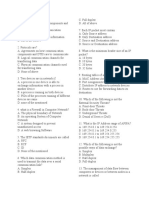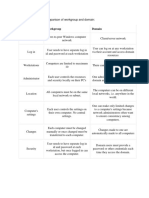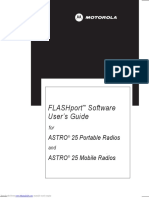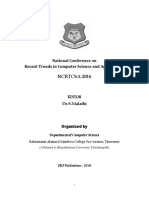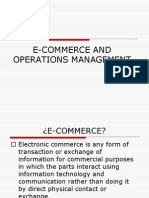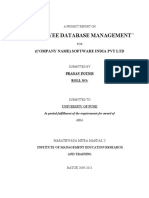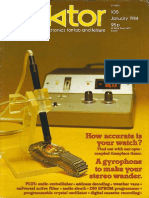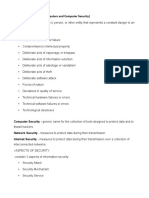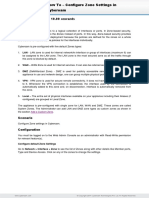0% found this document useful (0 votes)
8K views15 pagesComputer Network Quiz - 2 With Answers
The document contains 51 multiple choice questions about networking concepts such as protocols, ports, network models, devices and topologies. It tests knowledge of common acronyms and standards like POP, OSI, HTTP, TCP/IP and their properties. The questions cover a wide range of topics including network layers, transmission methods, network devices, error detection techniques and cryptography basics.
Uploaded by
Kiran alex ChallagiriCopyright
© © All Rights Reserved
We take content rights seriously. If you suspect this is your content, claim it here.
Available Formats
Download as TXT, PDF, TXT or read online on Scribd
0% found this document useful (0 votes)
8K views15 pagesComputer Network Quiz - 2 With Answers
The document contains 51 multiple choice questions about networking concepts such as protocols, ports, network models, devices and topologies. It tests knowledge of common acronyms and standards like POP, OSI, HTTP, TCP/IP and their properties. The questions cover a wide range of topics including network layers, transmission methods, network devices, error detection techniques and cryptography basics.
Uploaded by
Kiran alex ChallagiriCopyright
© © All Rights Reserved
We take content rights seriously. If you suspect this is your content, claim it here.
Available Formats
Download as TXT, PDF, TXT or read online on Scribd
/ 15



